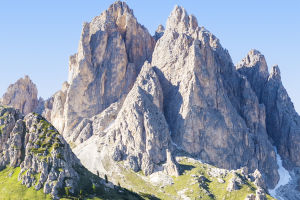Ulanqab Facts
Chinese Name: 乌兰察布 (wū lán chá bù)
Population: 2,090,200
Area: 54,500 square kilometers (21,042 square miles)
Location: Central Inner Mongolia, north China
Administrative Division: 1 district (Jining); 5 counties (Zhuozi, Huade, Shangdu, Xinghe, Liangcheng); 4 banners (Qahar Youyi Banner, Qahar Youyi Zhong Banner, Qahar Youyi Hou Banner, Siziwang Banner); 1 county-level city (Fengzhen)
Area Code: 0474
Zip Code: 012000
GDP (2019): CNY 80.84 billion (USD 11.72 billion)
Nationalities: Han, Mongol, Hui, Man, Daur, Chaoxian
A Data Center and Wind Power Capital
Dear Lykkers! Located in the heart of Inner Mongolia, Ulanqab, also known as Wulanchabu City, serves as a key regional hub. It borders Mongolia to the north, Xilingol to the northeast, Hohhot and Baotou to the west, Hebei Province to the east, and Shanxi Province to the south. Just 300 kilometers (186 miles) from Beijing, Ulanqab is easily accessible, taking only 1.5 hours by bullet train or 40 minutes by air to reach China’s capital.
With its stable geological conditions, cold climate, and cost-effective electricity, Ulanqab has become a preferred location for global corporations like Huawei, Alibaba, and Apple to establish data centers. Renowned as a wind power capital, the city boasts an installed wind and photovoltaic power capacity of 6.3 million kilowatts. Ulanqab's pleasant climate, with an average summer temperature of 18.8°C (65.8°F), complements its stunning landscapes of grasslands, forests, and lakes. In winter, attractions like Liangcheng Daihai International Ski Resort and Dahewan International Ski Resort draw tourists, along with seasonal events like the Ice and Snow Art Festival.
Ulanqab Attractions - Things to Do
Picturesque Grasslands
Ulanqab's vast grasslands are the closest to Beijing, offering a serene retreat. Gegentala Grassland is a national-level tourist spot showcasing a classic grassland landscape, while Huitengxile Grassland, an alpine meadow, features scattered natural lakes and Asia's largest wind power plant.
Daihai Lake
Known as a "shining pearl," Daihai Lake is the third-largest freshwater lake in Inner Mongolia. It is surrounded by historical relics, fossil sites, ancient towns, sections of the Great Wall, and tombs, making it a cultural treasure. Daihai Lake is only four hours’ drive from Beijing and an hour from Datong in Shanxi Province.
How to Get to and Around Ulanqab
By Air
Ulanqab is well-connected to nearby airports via expressways. Jining District, the city’s administrative center, is 1.5 hours from Hohhot Baita Airport, three hours from Baotou Airport, and four hours from Beijing Capital International Airport. Additionally, Datong Airport is just 120 kilometers (75 miles) away, and Taiyuan Wusu Airport can be reached in about five hours.
By Train
Five railway lines traverse Ulanqab, linking it to cities such as Erenhot (Erlianhaote), Baotou, Tongliao, and Beijing. Ulanqab Railway Station also offers international routes to Ulan Bator and Moscow.
By Bus/Highway
Several expressways, including the Dandong-Lhasa Expressway and Hohhot-Hailaer Expressway, run through Ulanqab. The international inland port of Erenhot, an important gateway to Outer Mongolia, is a four-hour drive away.
Weather
Ulanqab experiences a continental monsoon climate with significant temperature differences between summer and winter. The southern region is relatively warmer and wetter, while the northern part is windy. Precipitation mainly occurs from July to September. The annual temperature averages between 0°C (32°F) and 18°C (64.4°F).
Best Time to Visit
Summer and autumn are the most favorable seasons, offering cool and pleasant weather.
Ulanqab Travel Tips
Historical Insights
Ulanqab has a rich history dating back to the Warring States Period (476BC-221BC), when it was governed by the Zhao State and the Hun. It became part of the Qin Dynasty’s territory in 221BC. Over centuries, various ethnic groups, including the Huns, Mongols, and others, have lived in the region. The city was officially named Wulanchabu during the Qing Dynasty (1644-1911).
Physical Features
The Daqing Mountain runs through Ulanqab, with its offshoots forming plateaus, hills, and loess formations across the region. This diverse terrain adds to the city’s natural charm.
Whether exploring its grasslands, skiing in its resorts, or delving into its historical significance, Ulanqab offers a mix of natural beauty and cultural richness that makes it a must-visit destination.


